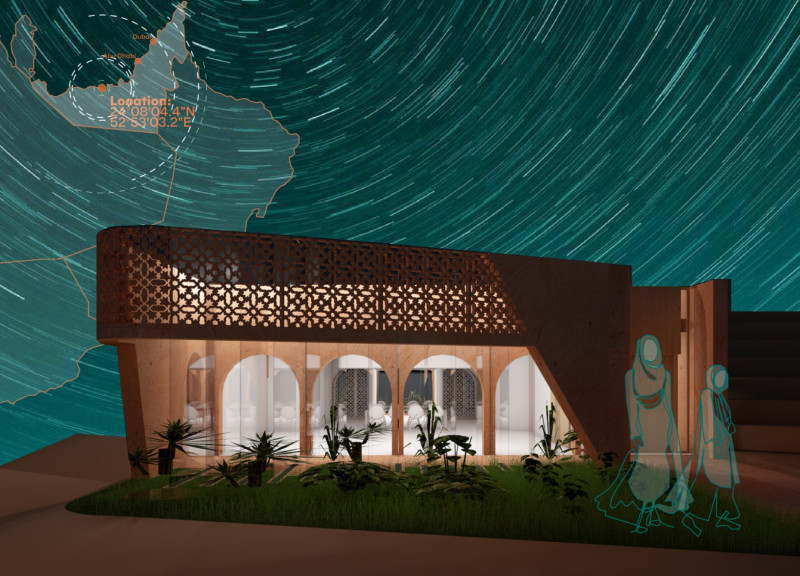5 key facts about this project
The architectural design project’s primary function is to serve as a civic center, designed to accommodate a variety of community activities and events. Its layout is carefully crafted to promote accessibility and inclusiveness, with well-defined circulation paths that guide users through the various spaces. The design integrates both open and enclosed areas, allowing for flexible use and diverse programming. This adaptability is a fundamental aspect of the design, enabling the space to host gatherings, educational activities, and cultural events.
A notable feature of the project is the emphasis on natural light and ventilation. Large windows and strategically placed skylights allow sunlight to permeate through the interiors, creating vibrant and inviting environments. This attentiveness to light not only enhances the aesthetic qualities of the space but also contributes to energy efficiency, reducing the need for artificial lighting during daylight hours. The design encourages a relationship between indoor and outdoor spaces; landscaped areas are woven into the layout, allowing for transitions between built and natural environments.
The materiality of the project is carefully chosen to reflect both durability and warmth. The exterior façade showcases a combination of locally sourced stone and sustainable timber, which speak to the contextual resonance of the building within its locality. These materials ground the structure, anchoring it to the site while creating visually pleasing contrasts. The use of timber, in particular, adds a human scale to the design, offering a sense of comfort and familiarity to users. Additionally, the project incorporates energy-efficient glass and green roofing systems, aligning with modern sustainability practices and reducing its ecological footprint.
In terms of architectural ideas, the project takes inspiration from traditional building forms, reinterpreting them through contemporary lenses. The rooflines feature gentle slopes, reminiscent of local heritage architecture, while the overall silhouette offers a modern twist. This thoughtful approach allows the building to communicate with its historical context while also showcasing innovative design elements.
The integration of technology in the building's design is another significant aspect, with smart systems implemented for lighting, heating, and cooling. These features not only improve the efficiency of the building but also enhance the comfort of its occupants. The layout includes spaces for collaboration and social interaction, reflecting an understanding of the importance of community engagement in contemporary architecture.
Moreover, special attention is given to landscaping, with native plants selected to support local biodiversity and reduce water usage. This commitment to environmental stewardship is evident not only in the choice of materials but also in the overall design approach, emphasizing harmony with the natural world.
In terms of unique design approaches, the project prioritizes community feedback throughout the design process. This collaborative spirit reflects an understanding that architecture is not solely about the physical structures but deeply about the people who inhabit them. Engaging with potential users played a crucial role in defining the spatial organization and functional needs of the building.
For those intrigued by the architectural aspects of this project, a deeper exploration of the architectural plans, architectural sections, and varied architectural designs will provide additional insights into the thoughtful considerations that shaped this civic center. The careful detailing, combined with a clear focus on user experience and environmental sustainability, makes this project a worthwhile case study in modern architectural practices. Interested readers are encouraged to delve into the project presentation for an expansive review of its layers and nuances, offering a broader understanding of contemporary architectural ideas at work.


























